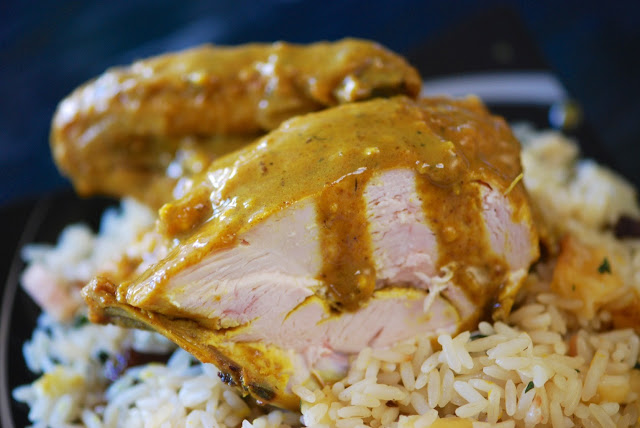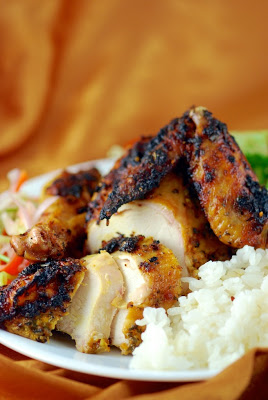Are you washing chicken and poultry before cooking? Unless you just dropped it in the dirt, there is absolutely no reason to, and it could even make you sick! Don’t do it, here’s why…

Chicken Caprese with mozzarella, tomato and basil, from Tony’s Deli Case.
Simply Washing chicken and poultry can contaminate your sink, faucet, clothes, towels, tools, countertops and other foods in the area. When washing chicken, tiny droplets can cross contaminate your counters, clothes, tools and other foods via splashing and aerosolization. If you touch these areas, or the raw chicken, you can also cross contaminate everything else you touch. This includes the faucet, towels, knives, cutting boards light switches, the baby, the dogs and anything else in reach.
About Salmonella
Raw poultry is just one source of salmonella. It’s also common with unpasteurized milk or juice, contaminated raw fruits and vegetables, pet foods or treats and reptiles such as snakes, turtles and lizards. Those most at risk of salmonella include: young children, pregnant women, the elderly or frail, transplant patients, patients getting radiation treatment or folks with a weakened immune system.

Curry Chicken with Bombay Rice from Tony’s Deli Counter.
Safe Poultry
Proper cooking is the only way to kill bacteria on poultry, not washing chicken. Here are some other tips to minimize the chance of getting dangerous bacteria in your foods…
Thaw it Right
Always keep your poultry refrigerated until ready to use. If frozen, DON’T thaw on the countertop; bacterium multiply at exponential rates at room temperature. Thaw frozen poultry slowly in the refrigerator in the original package on a plate to catch any drippings. If raw chicken juices do escape into your fridge, simply clean up with these tips below. If you are in a real rush, thaw in a plastic bag and in tepid water. This will speed thawing and keep the water cool for a safe temperature overall.
Poultry Skin
The bird’s skin is where most of the bacteria and fats reside, so a lot of folks choose to remove it first. Our butchers are pleased to do this for you, just ask! If you do it yourself, try using a damp towel between your hands and the skin, this makes it much easier to grab and pull. Then sanitize the towel and use to clean up.
If you leave the skin on, worry not, it will heat many times higher than the inside of the bird and is perfectly safe.


Tony’s Herb Roasted Chicken
Safe Preparation and Cleanup
When it’s time to cook, unwrap your bird and place it back on the butcher wrap. Season and place directly into the roasting pan (have it ready!), or back onto the butcher wrap and move to the stove or grill to cook.
Proper Poultry Cleanup
Once your poultry is cooking, add 1 TBS of chlorine bleach to 1 gallon of warm water to make a sanitizing solution of about 200 ppm chlorine (NO MORE!). Wash everything that may have come in contact with the poultry (hands, knives, countertops, faucet handles, cutting boards, towels, etc) and leave it in contact with the solution for 60 seconds. Once sanitized, it’s important to rinse everything well with clear water – sanitizer isn’t good for you either!
Do take care with sanitizing solutions, just because it says “anti-bacterial” doesn’t mean it’s safe to eat! Whatever sanitizer you use, be sure to rinse everything well afterwards!

Tony’s Portuguese Marinated Chicken from the meat department, great in the oven or grill!
Safe Cooking Temperatures
Get a reliable meat thermometer and cook your chicken to at least 165° in the deepest part of the thigh and it will be perfectly safe. At 165° internal, areas near the let and thigh joints can still be a bit red, if this bothers you, cook it a little more, but never over 185° internal (overcooked chicken isn’t any safer, just drier and tougher!). A good meat thermometer is a GREAT investment, saving thousands of meals in its lifetime, not bad for $10 – $100 bucks!
Chicken Farms and Processing
I’ve toured our chicken farms processing facility and they take every possible step to reduce the bacteria that’s naturally associated with poultry. The henhouse is sanitized and nesting materials replaced before a new batch of chicks is moved in, and anyone who enters must wear a special suit, hairnet and foot covers. The air and water entering the henhouse is filtered and the birds are protected from wild birds and pests that can carry disease.

My brother DJ inspecting a chicken farm
When the birds are harvested, the attention to cleanliness is amazing. Once again we had to put on a hair net, beard net and special suit to even enter the facility, and we had to sanitize our shoes and wash our hands every time we changed rooms.
In the last step of production fresh poultry is chilled in a bath of sanitized ice water. I thought this step was impressive and feel it’s far safer than the ‘air-chilled’ fad.
So no, your bird doesn’t need a bath, and proper cooking and cleanup will keep your family perfectly safe.
—
Please share this blog with fellow foodies!
Comments are closed.

